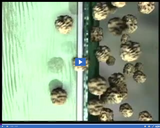
Diffusion involves the movement of molecules from an area of greater concentration to an area of lesser concentration.
- Subject:
- Science
- Provider:
- Utah Education Network
- Author:
- Visual Learning Company
- Date Added:
- 02/28/2010

Diffusion involves the movement of molecules from an area of greater concentration to an area of lesser concentration.
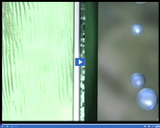
In the process of osmosis, cells gain water by allowing it to flow from an area of higher concentration, outside the cell, to an area of lower concentration, inside the cell.
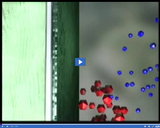
Cell membranes are selectively permeable, only allowing some molecules to pass through.

The nuclear membrane surrounds and protects the nucleus. Located inside the nucleus is the nucleolus, where RNA and ribosomes are created.

Vacuoles store food and other materials for later use by the cell. They also store waste, and in plant cells, they store water.

Once upon a time, 300 years ago, a beautiful cello was created by a master craftsman. This wonderful instrument eventually ended up in the gifted hands of one of the greatest cellists in history, Pablo Casals. Soon, the cello became known as Pablo, too. This is the story of A Cello Named Pablo. Listen as modern musician Amit Peled tells how he came to play Casals' favorite instrument. It's the latest episode of YourClassical Storytime, featuring an original story written by Marni Fogelson and illustrations by Avi Katz.

This resource includes a Google Slides presentation teachers can use to teach a lesson on cellular respiration. The Slides presentation can be converted into a Nearpod presentation using the Nearpod add-on. Accompanying this resource is a video explanation of how to use the resource and how technology has been strategically added to the lesson to engage students. I took an "old" lesson on cellular respiration that was simply comprised of a PowerPoint Presentation with a worksheet of fill-in-the-blank notes and a crossword puzzle for early finishers and enhanced it using Nearpod. I also used the new Utah Science and Engineering (SEEd) standards to have students compare the phenomena of how fast can Usain Bolt run, and how many world records he could actually have at the Olympics. Students take a poll to assess whether they think Mr. Bolt deserves the title, "The fastest man alive!" When we look at the mathematical chart data using a collaborative board in Nearpod, students can see that glycolysis is different than cellular respiration and that every human has a metabolic threshold. Students then explore sugar burning through a Nearpod sticky-note discussion and get direct instruction on the chemistry of cellular respiration by using Nearpod fill-in-the-blank cards that automatically score responses. Resource Author: Shannon Mower

Cellular Respiration
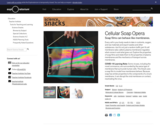
Every cell in your body needs to take in nutrients, oxygen, and raw materials and export wastes and other substances—but it’s not just a random traffic jam! A cell membrane (also called a plasma membrane) regulates what comes in and what goes out. Explore the properties of soap films and relate them to the properties of plasma membranes and the mechanics of transport across membranes.

Students examine propaganda and media bias, research a variety of banned and challenged books, choose a side of the censorship issue, and support their position through an advertising campaign.

History contains the stories of men, women and children. Biographies and personal histories add to the understanding of a time and place.
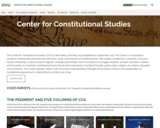
Dedicated to the civil, nonpartisan promotion of constitutional literacy within our local, state, and national communities. Focus on 5 areas: Educational Programs, Federalism, The Quill Project, Equal Liberty & the Constitutional Rule of Law, and Property & Free Markets.
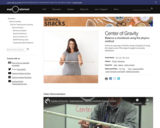
Here’s an easy way to find the center of gravity of a long, thin object, even if the object’s weight is unevenly distributed.
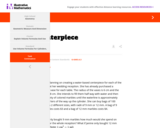
The purpose of this task is to use geometric and algebraic reasoning to model a real-life scenario.
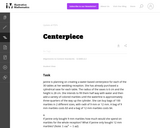
The purpose of this task is to use geometric and algebraic reasoning to model a real-life scenario. In particular, students are in several places (implicitly or explicitly) to reason as to when making approximations is reasonable and when to round, when to use equalities vs. inequalities, and the choice of units to work with (e.g., mm vs. cm).
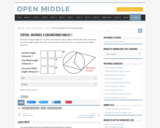
Open Middle provides math problems that have a closed beginning, a closed end, and an open middle. This means that there are multiple ways to approach and ultimately solve the problems. Open middle problems generally require a higher Depth of Knowledge than most problems that assess procedural and conceptual understanding.
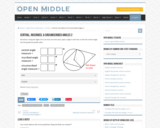
Open Middle provides math problems that have a closed beginning, a closed end, and an open middle. This means that there are multiple ways to approach and ultimately solve the problems. Open middle problems generally require a higher Depth of Knowledge than most problems that assess procedural and conceptual understanding.
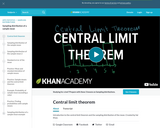
This video talka about what is easily one of the most fundamental and profound concepts in statistics and maybe in all of mathematics. And that's the central limit theorem.

In this interactive activity from NOVA, discover how centripetal force can affect you when riding in a car or flying at high speeds in a fighter jet.

This video segment explains centripetal force and illustrates how roller coasters rely on it to give you a thrilling ride.